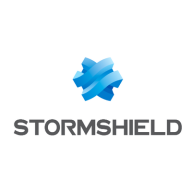

Stormshield Endpoint Security and Webroot Business Endpoint Protection both offer strong security features in the cybersecurity market. Based on the comparisons, Webroot seems to have the upper hand due to its ease of use and effective customer support.
Features: Stormshield Endpoint Security is praised for its robust monitoring, incident response capabilities, and advanced threat protection. Webroot Business Endpoint Protection is highly valued for its ease of integration, streamlined scanning processes, and user-friendly features.
Room for Improvement: Reviews for Stormshield Endpoint Security suggest the need for a more intuitive setup process, improved performance speed, and better overall user experience. For Webroot, users request better reporting features, enhanced malware detection capabilities, and more comprehensive feature enhancements.
Ease of Deployment and Customer Service: Stormshield Endpoint Security users find the deployment process somewhat challenging and note occasional delays in customer support responses. Conversely, Webroot Business Endpoint Protection is commended for its straightforward deployment and responsive customer service.
Pricing and ROI: Stormshield Endpoint Security is viewed as having competitive pricing, although some users feel the ROI could be higher considering the setup complexity. Webroot Business Endpoint Protection’s pricing is noted as cost-effective, with users emphasizing a good ROI due to its comprehensive features and ease of use.

Webroot Business Endpoint Protection provides comprehensive endpoint protection, antivirus, and security features across devices like mobiles, computers, and servers to prevent malware and other threats.
Webroot Business Endpoint Protection helps businesses manage endpoint security through its robust cloud application and integrates with RMM tools for improved management and pricing. It offers EMS service, automatic updates, and a lightweight agent, ensuring ease of use and minimal resource consumption across all devices. This solution maintains a cloud-based database for real-time threat recognition and delivers strong performance with low resource usage, leveraging heuristic AI for threat detection. Companies use it for its antivirus, firewall functions, device location and wiping, and security policy applications, contributing to effective security management.
What are the key features?Webroot Business Endpoint Protection is implemented across industries to ensure robust endpoint security. Its integration with RMM tools allows for seamless management in IT environments, while its cloud-based threat detection provides essential cybersecurity for sectors such as healthcare, finance, and education.
We monitor all Endpoint Protection Platform (EPP) reviews to prevent fraudulent reviews and keep review quality high. We do not post reviews by company employees or direct competitors. We validate each review for authenticity via cross-reference with LinkedIn, and personal follow-up with the reviewer when necessary.